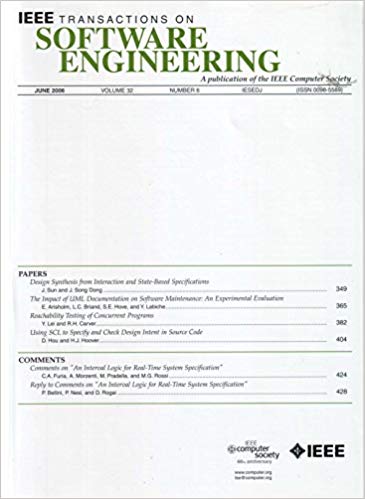FlexFL:基于开源大型语言模型的灵活有效的故障定位
IF 6.5
1区 计算机科学
Q1 COMPUTER SCIENCE, SOFTWARE ENGINEERING
引用次数: 0
摘要
故障定位(FL)的目标是识别软件系统中的错误位置,以提高调试效率和提高软件质量。由于大型语言模型(llm)令人印象深刻的代码理解能力,一些研究已经提出利用llm来定位错误,即基于llm的FL,并证明了良好的性能。然而,首先,这些方法在灵活性上是有限的。它们依赖于bug触发测试用例来执行FL,而不能利用其他可用的bug相关信息,例如bug报告。其次,它们建立在专有法学硕士的基础上,尽管法学硕士功能强大,但也面临着数据隐私方面的风险。为了解决这些限制,我们提出了一种新的基于llm的FL框架,名为FlexFL,它可以灵活地利用不同类型的错误相关信息,并有效地与开源llm一起工作。FlexFL由两个阶段组成。在第一阶段,FlexFL使用不同系列的最先进的FL技术减少了有bug代码的搜索空间,并提供了与bug相关的方法的候选列表。在第二阶段,FlexFL利用llm深入研究,对第一阶段建议的方法的代码片段进行双重检查,并改进故障定位结果。在每个阶段,FlexFL都基于开源llm构建代理,它们共享相同的管道,不假定任何类型的错误相关信息,并且可以与函数调用交互,而无需开箱即用的功能。在Defects4J上的大量实验结果表明,FlexFL的性能优于基线,并且可以与不同的开源llm一起工作。具体来说,使用轻量级开源LLM Llama3-8B的FlexFL可以比使用GPT-3.5的两种最先进的基于LLM的FL方法AutoFL和AgentFL多定位42和63个bug。此外,FlexFL可以定位93个bug,而非基于llm的FL技术无法定位。此外,为了减少潜在的数据污染,我们在Llama3-8B之前没有见过的数据集上进行了实验,评估结果表明FlexFL也可以取得良好的性能。本文章由计算机程序翻译,如有差异,请以英文原文为准。
FlexFL: Flexible and Effective Fault Localization With Open-Source Large Language Models
Fault localization (FL) targets identifying bug locations within a software system, which can enhance debugging efficiency and improve software quality. Due to the impressive code comprehension ability of Large Language Models (LLMs), a few studies have proposed to leverage LLMs to locate bugs, i.e., LLM-based FL, and demonstrated promising performance. However, first, these methods are limited in flexibility. They rely on bug-triggering test cases to perform FL and cannot make use of other available bug-related information, e.g., bug reports. Second, they are built upon proprietary LLMs, which are, although powerful, confronted with risks in data privacy. To address these limitations, we propose a novel LLM-based FL framework named FlexFL, which can flexibly leverage different types of bug-related information and effectively work with open-source LLMs. FlexFL is composed of two stages. In the first stage, FlexFL reduces the search space of buggy code using state-of-the-art FL techniques of different families and provides a candidate list of bug-related methods. In the second stage, FlexFL leverages LLMs to delve deeper to double-check the code snippets of methods suggested by the first stage and refine fault localization results. In each stage, FlexFL constructs agents based on open-source LLMs, which share the same pipeline that does not postulate any type of bug-related information and can interact with function calls without the out-of-the-box capability. Extensive experimental results on Defects4J demonstrate that FlexFL outperforms the baselines and can work with different open-source LLMs. Specifically, FlexFL with a lightweight open-source LLM Llama3-8B can locate 42 and 63 more bugs than two state-of-the-art LLM-based FL approaches AutoFL and AgentFL that both use GPT-3.5. In addition, FlexFL can localize 93 bugs that cannot be localized by non-LLM-based FL techniques at the top 1. Furthermore, to mitigate potential data contamination, we conduct experiments on a dataset which Llama3-8B has not seen before, and the evaluation results show that FlexFL can also achieve good performance.
求助全文
通过发布文献求助,成功后即可免费获取论文全文。
去求助
来源期刊

IEEE Transactions on Software Engineering
工程技术-工程:电子与电气
CiteScore
9.70
自引率
10.80%
发文量
724
审稿时长
6 months
期刊介绍:
IEEE Transactions on Software Engineering seeks contributions comprising well-defined theoretical results and empirical studies with potential impacts on software construction, analysis, or management. The scope of this Transactions extends from fundamental mechanisms to the development of principles and their application in specific environments. Specific topic areas include:
a) Development and maintenance methods and models: Techniques and principles for specifying, designing, and implementing software systems, encompassing notations and process models.
b) Assessment methods: Software tests, validation, reliability models, test and diagnosis procedures, software redundancy, design for error control, and measurements and evaluation of process and product aspects.
c) Software project management: Productivity factors, cost models, schedule and organizational issues, and standards.
d) Tools and environments: Specific tools, integrated tool environments, associated architectures, databases, and parallel and distributed processing issues.
e) System issues: Hardware-software trade-offs.
f) State-of-the-art surveys: Syntheses and comprehensive reviews of the historical development within specific areas of interest.
 求助内容:
求助内容: 应助结果提醒方式:
应助结果提醒方式:


